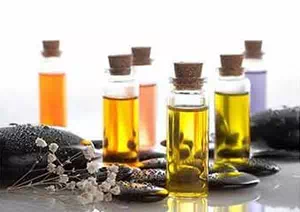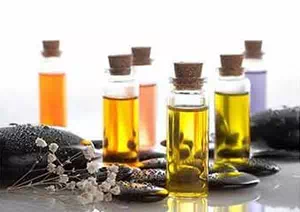All Categories


Olibanum Oil CAS 8016-36-2, Olibanum Oil, CAS 8016-36-2
Chemical Name: Rosin glyceride (Also known as ester gum, glycerin rosin ester, frankincense oil)
CAS : 8016-36-2
Formula : C63H98O6
Mol. wt. : 0
EINECS : 232-482-5
| CAS | 8016-36-2 |
| Molecular formula | C63H98O6 |
| Molecular weight | 0 |
| EIENCS | 232-482-5 |
| Form | / |
| Melting point | / |
| boling point | 140 °C(lit.) |
| Density | 0.870 g/mL at 25 °C(lit.) |
| Solubility | / |
| PKA | / |
| Color | / |
| Storage temp |
Chemical Name: Rosin glyceride (Also known as ester gum, glycerin rosin ester, frankincense oil)
Molecular formula: C₆₃H₉₈O₆ or C₂₃H₃₆O₄ (Different sources indicate different expressions)
CAS Number: 8016-36-2/8050-31-5 (Commonly used in Industrial grade)
EINECS number: 232-482-5
Appearance: Transparent liquid, flake or light yellow granular solid. The lighter the color, the better the quality
Solubility: Insoluble in water and low-molecular-weight alcohols, soluble in aromatic/aliphatic hydrocarbon solvents (benzene, toluene, mineral oil, etc.)
Mainstream process route (esterification method) :
Step 1: After crushing the rosin, heat it to 160-180℃ to melt it.
Step 2: Add glycerol (rosin: glycerol ≈3:1) and the catalyst (ZnO or p-toluenesulfonic acid) in proportion.
Step 3: Heat to 220-250℃ and react for 5 hours, then vacuum dehydrate.
Step 4: Cool and refine, filter to obtain the finished product. An acid value of ≤10 mg KOH/g is considered qualified.
Technical optimization
Green process: NdZSM-5 molecular sieve catalyst is adopted, and the conversion rate is increased to 96%.
Continuous production: Hubei enterprises have introduced fixed-bed reactors, increasing production capacity by 20%.
Adhesives and Coatings (Main Uses)
Tackifying resin: Used in SBS/EVA hot melt adhesives and pressure-sensitive adhesives to enhance initial adhesion and aging resistance.
Ink binder: Enhances the adhesion of printing ink, suitable for both lead and gravure printing inks.
Food industry
Chewing gum base agent: Endows chewing gum with foaming property and chewability (it must comply with the GB 2760 standard).
Emulsifying stabilizer: Used for beverages (such as citrus essential oils) to adjust density and enhance stability.
Daily chemicals and medicine
Cosmetic additives: Used as moisturizers and emulsifiers in skin care products (frankincense oil).
Pharmaceutical excipients: Used as binders in tablet coating and sustained-release preparations.
Emerging fields
Environmentally friendly materials: Develop biodegradable plastics (such as packaging films) to replace petroleum-based products.
Agricultural additives: As pesticide enhancers, they enhance the stress resistance of crops.
Health risk:
Low toxicity: Oral LD₅₀ in rats =2620 mg/kg, which is practically non-toxic.
Irritation: Contact with eyes or skin may cause inflammation (protective gloves should be worn during operation).
Storage and transportation
Keep sealed and away from light. Store in a cool place at ≤25℃ with a relative humidity of less than 75%.
Transportation mark: UN 1993 (Flammable Liquid).
Environmental protection compliance
The food grade must comply with the standards of GB 10287-88 and FDA 21CFR172.615.
REACH certification is required for exports to the European Union, and bio-based products are given priority policy support.
* Prompt reply and 24 hours online, professional team to provide best price and high quality product.
* Sample testing support.
* Every batch of products will be tested to ensureits quality.
*The packing also can be according the customers` requirment.
*Any inquiries will be replied within 24 hours.
*we provide Commerical Invoice, Packing List, Bill of loading, COA , Health certificate and Origin certificate. If your markets have any special requirements, let us know.